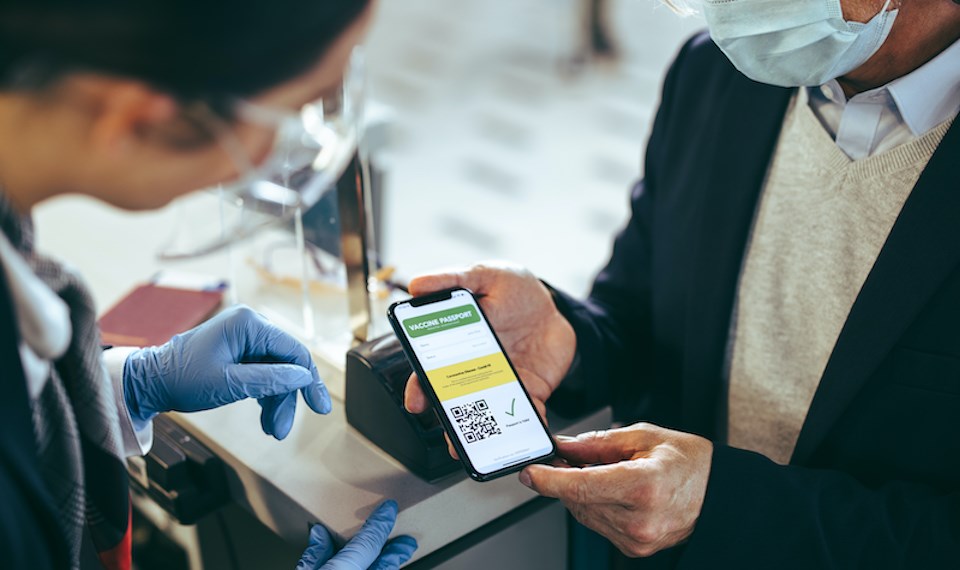Canada recently dropped its pre-entry coronavirus testing requirement and several others — but the ease of travel doesn't extend south of the border — at least in some instances.
B.C. residents travelling to the United States need to keep several things in mind. The rules that apply at home won't apply if they choose to fly rather than drive. Further, some rules at home will still apply on flights, despite landing in a U.S. airport.
Locals should also consider that individual states may have different rules, which means you'll need to look at the requirements in each one you plan to visit beforehand.
I recently flew down to San Diego and didn't encounter any issues. But there are several things I needed to do before I packed my bags.
Pre-entry test requirement
Travellers to the United States must show a negative COVID-19 viral test result taken no more than one day before travel, or documentation of having recovered from COVID-19 in the past 90 days before they board their flight.
I was unable to get a test done during hours when travel clinics were open prior to my day of travel because of when the test needed to be conducted. Instead, I could allocate four hours prior to my flight.
CVM Medical Ltd is the official provider of Rapid Antigen Testing at the airport. Rapid testing starts at $79 CAD and is available seven days a week. You should book your test well in advance of travel to ensure you can secure a spot that works with your itinerary. Have a look at a guide on how you can use this service.
Alternatively, there are several places you can get tested in the Metro Vancouver region. They vary in pricing and availability, however, and you need to ensure that you time your test so that it is taken no more than one day prior to your entry to the U.S.
Another option is to take a supervised test at home via a telehealth service. There are a few of these available, but they require that you can connect with a health care professional who can observe you performing the swab.
There are no options that allow you to take the test on your own without supervision.
Proof of vaccination
Similar to Canada, travellers who are non-residents of the U.S. must show proof of vaccination upon arrival. You are considered fully vaccinated two weeks (14 days) after your second dose of an accepted two-dose series.
Ensure that you have your federal proof of vaccination saved to your phone to show that you are fully vaccinated and able to enter the country. All Health Canada-approved vaccines are accepted.
Currently, the U.S. does not require a third dose of a vaccine.
Masking policies
Travellers flying into or out of Canadian airports must need to mask up, both inside of the terminal and on the plane. They must also don masks when they board cruise ships.
South of the border, however, travellers are no longer required to mask up on domestic flights. A federal judge in Florida struck down the mandate on airplanes and mass transit on April 18 and some airlines and airports swiftly removed their face mask requirements.
Not all airlines and airports have welcomed the change, however. New York City airports have so far left the mask policy in place, with the exception of Newark Liberty International Airport in neighbouring New Jersey. This means that you'll have to check the policy regarding airports and cities you plan to visit to see what their policies are regarding masks.
Additionally, any plane that is flying back into or out of a Canadian airport requires masks. In other words, it doesn't matter if the flight originates or ends up in the U.S. — if it's destined for the Great White North, you'll need to stay masked up.
Are you planning on going on a cruise?
If you plan on going on a cruise that departs out of a U.S. port, keep in mind that you will also need to show proof of a negative COVID-19 test. You must get a test as close to the time of cruise departure as possible (no more than three days). So, if you fly into the states over three days before the cruise, you may not be able to use your previous test to board the cruise. I took a cruise out of San Diego a couple of days after I landed in the city. Since I had taken a test the day I flew out of YVR, however, I didn't have to take another one.
You do not have to wear a mask while on board most cruise ships but it is strongly recommended.
The Centres for Disease Control (CDC) designates cruise ships operating or planning to operate in United States waters under its "Cruise Ship Colour Status" program. Check your cruise ship’s status before travelling.
“Gray” designated cruise ships have chosen not to participate in the CDC’s COVID-19 Program for Cruise Ships.
ArriveCAN App remains in place
All travellers, regardless of how long they were away from Canada, continue to be required to submit their mandatory information via ArriveCAN (free mobile app or website), including contact and travel information, as well as proof of vaccination.
Find out how to use the app with Vancouver Is Awesome's guide.



